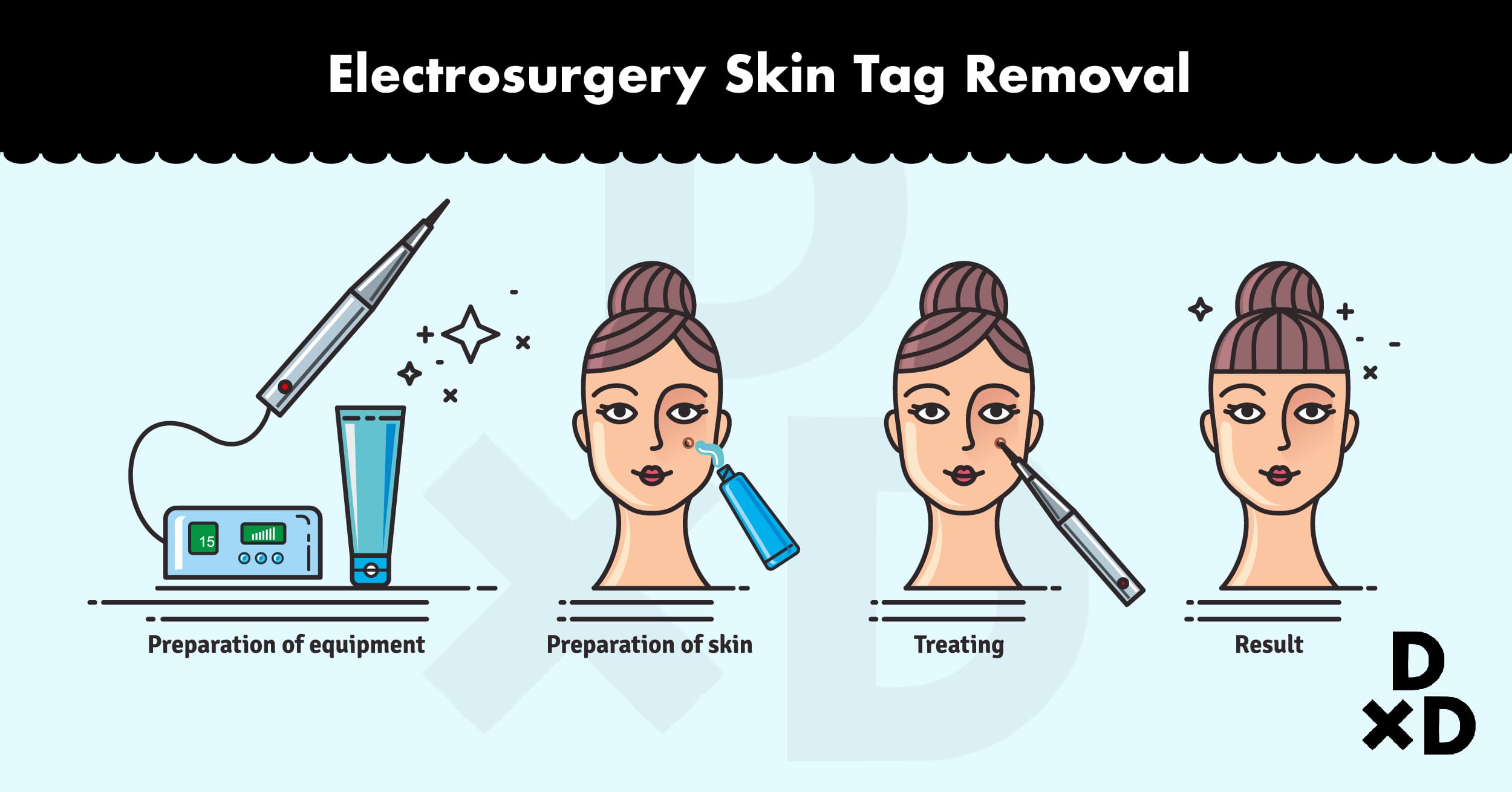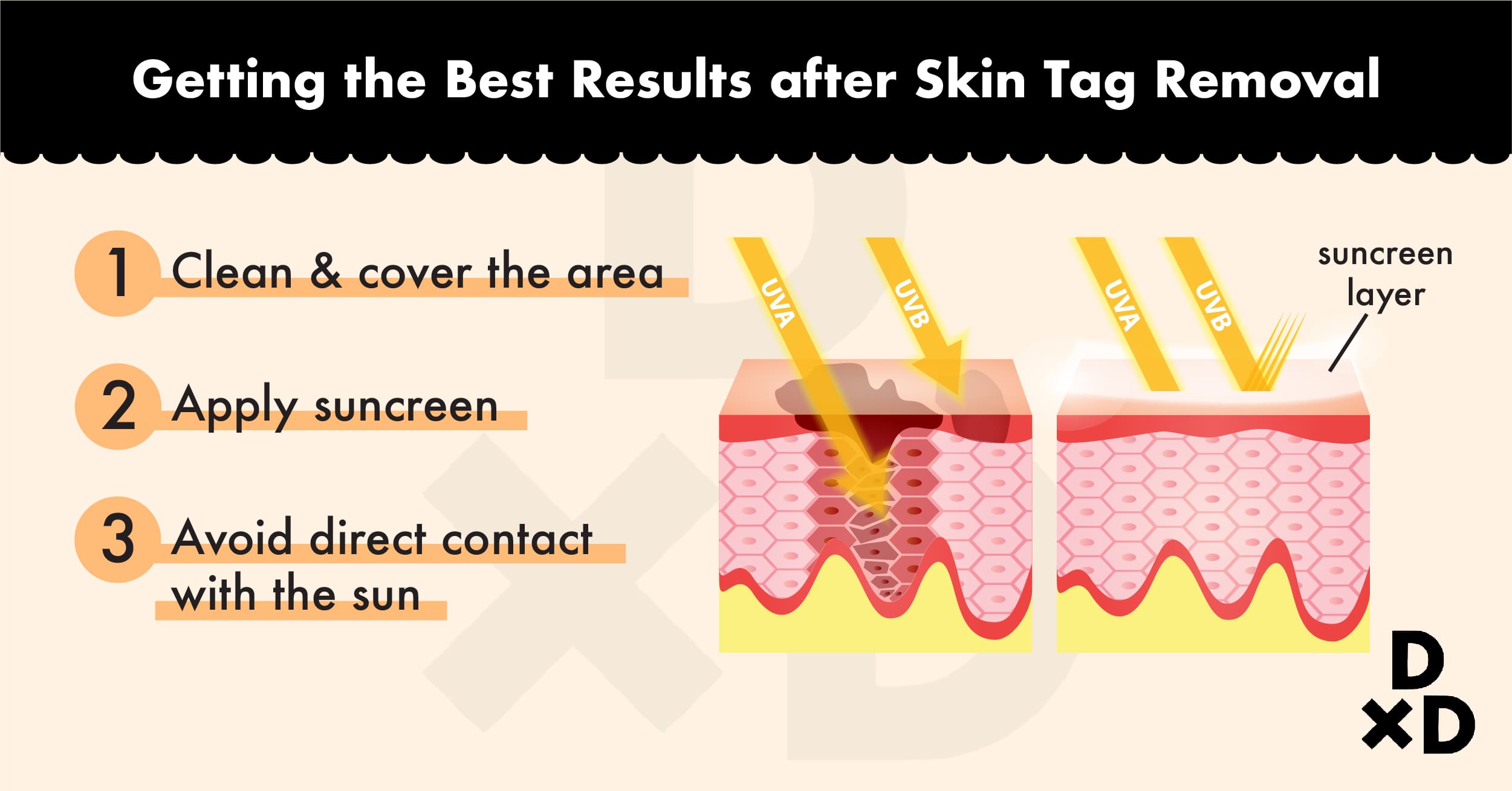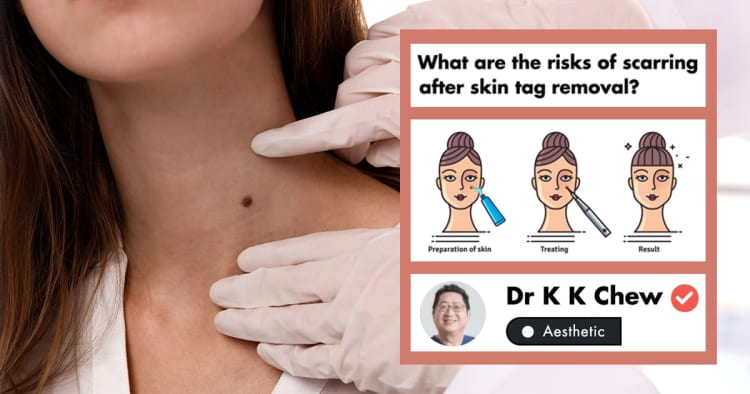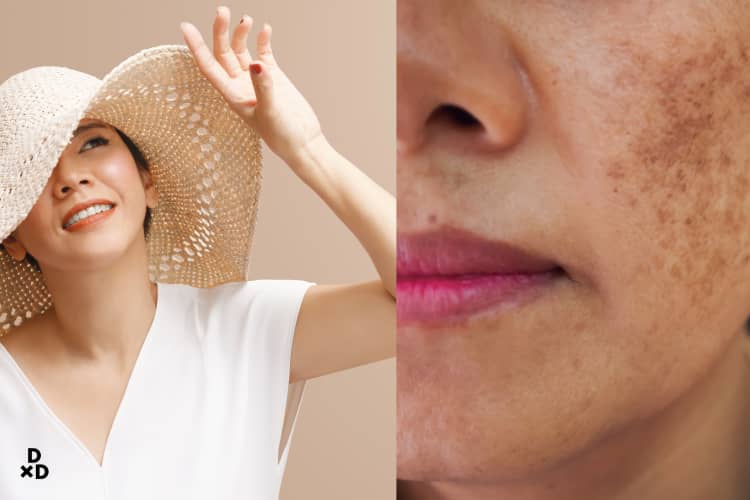Skin tags can be found dangling on various parts of a person’s body. It can be both functionally and aesthetically displeasing. It is not dangerous, but without treatment, it can be a long-term nuisance.
Most of my patients looking for skin tag removal are concerned about the possibility of scarring. I am not surprised; it is a legitimate concern as scars can affect your complexion in the long run.
Do not worry! There are various treatment methods available. After finding one that is suitable for you with an experienced doctor, the risk of scarring can be kept to a minimum. Read on to find out more!
What are skin tags?

Skin tags are small flaps of tissue that hang off the skin. They are very common and usually harmless. As such, they are basically an outgrowth of normal skin. They are thought to be related to chronic friction, which is why they tend to be more common in overweight or obese persons.
However, the following could also play a part in the development of skin tags:
- Higher levels of growth factors such as during pregnancy
- Insulin resistance (a common feature in diabetes)
- Genetic predisposition
Based on my experience, they are more common around the neck, chest, back, and groin areas [1].
In most cases, skin tags are not dangerous. In my opinion, they are more of an aesthetic problem, rather than a functional one.
That said, skin tags may cause irritation when there is friction.
Most of the time, skin tags are painless during its formation. However, some of my patients complain of pain when the skin tags rub against clothing or jewellery.
You will want it to be removed because…

Before getting any treatment, I highly recommend that you consider WHY you want to get it. Is it purely cosmetic? Or is it due to constant discomfort?
This is the first thing that you should note so that you can better weigh the risks and rewards of getting a skin tag removal!
3 main options to remove skin tags

The 3 main procedures to remove skin tags include:
With an experienced doctor, all 3 procedures are safe. The most important thing is to find one that is most suitable for you. It is always best to consult a doctor before getting the treatment!
Cryosurgery uses liquid nitrogen

With cryosurgery, liquid nitrogen is used to remove the skin tags with extreme cold. As a result, the skin tags will fall off about 10-14 days after the treatment.
It is virtually painless and the risk of scarring is low. However, there is still a risk of skin irritation around the skin tag [2]. The good news is that it should heal on its own within a few days.
In addition, cryosurgery is best suited for patients who have light skin. For this reason, light skin can reduce the risk of post-inflammatory hyperpigmentation.
Electrosurgery "burns off” the skin tag

Modern high-frequency electrosurgical devices transfer electrical energy to human tissue via a treatment electrode that remains cool.
For electrosurgery, the electrode sends an electric current into the skin. The tip is held just slightly above the skin tag, causing damage to the area. As a result, the tissue will dry out and over time, the skin tags will fall off [3].
However, there is a small risk of scarring and hyperpigmentation or dark spots after the procedure. That said, you can definitely avoid the side-effects with proper after-care!
In the treatment of superficial lesions like skin tags, it is likened to a form of cutaneous surgery that induces desiccation or fulguration of the tissue.
Laser ablation works in a similar way

There are various lasers available to treat different skin conditions. To remove skin tags, the laser is set to produce an intense light beam. This light beam will precisely burn and destroy the extra tissue [4]. Similarly to electrocautery, there is a small risk of hyperpigmentation and scarring.
The benefit of all the methods mentioned above is that it takes only around 30 minutes to complete. This is a so-called "lunchtime procedure"!
Having said that, lasers must be used with caution in those with darker skin. This is to ensure that the risk of post-inflammatory hyperpigmentation is reduced.
Do you have a history of easy scarring?

If you scar easily in the past, the chances of scarring after treatment may be higher. Despite that, all of the treatments I have mentioned in this article are generally very safe to undergo.
Before getting any treatment, you should always consult a doctor. Do find someone that you can trust. If necessary, do check out multiple clinics until you find one that you are comfortable with.
Tips for after-care

For a few days after the procedure, the area around the skin tag will still be quite sensitive. Similarly to any other treatment, the recovery stage is as important as the procedure itself! That is to ensure that you get the best results.
Moreover, you should keep the area clean and protected to prevent irritation. In addition, you should apply sunblock and avoid direct sunlight as UV rays can cause pigmentation.
In conclusion, the choice is up to you as skin tags are considered benign. With that, there are no severe consequences that would come even if you do not remove them.
Skin tags can certainly cause discomfort and be aesthetically displeasing. If you are thinking of removing them, do consult a doctor beforehand!
Read more: 8 Dermatologist Clinics in Singapore for Your Skin Concerns (2020)
%treatmentquote title=Get quote for Skin Tag Removal%
Dr K K Chew practices aesthetic medicine and NU•U Aesthetics & Wellness Clinic located at Paragon since 2004. Dr Chew is the past Vice President of the Singapore Society of Aesthetic Medicine and currently serves as its Honorary Advisor. He believes that every face and person is unique and everyone will have their own aspirations and visions.
Would you like to ask any related health questions?
You can Ask A Doctor right away, or request for treatment quotes from doctors.













